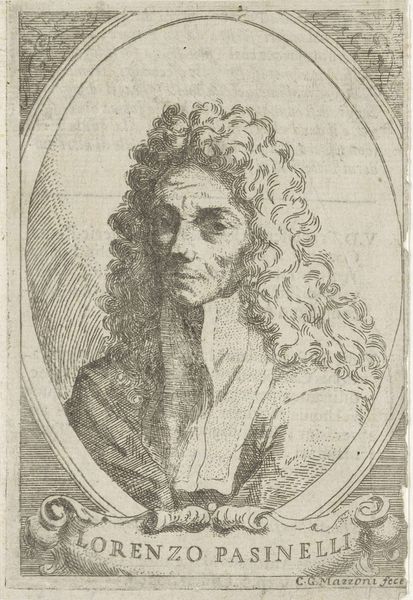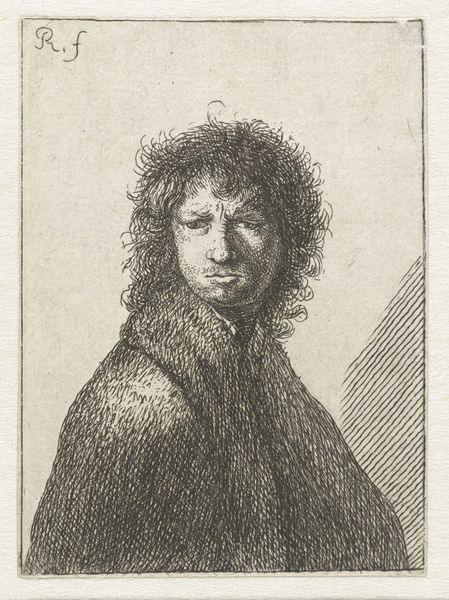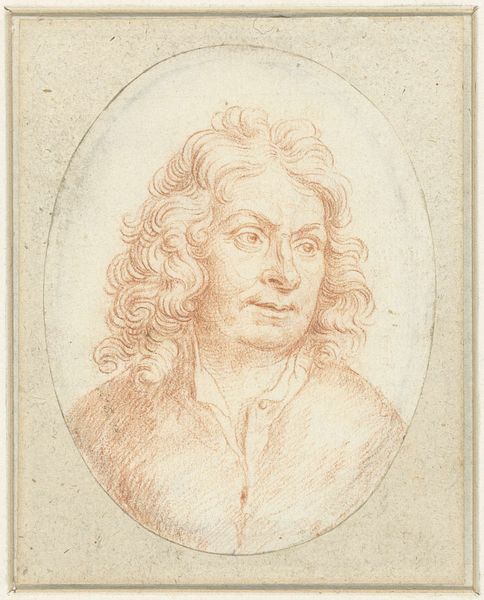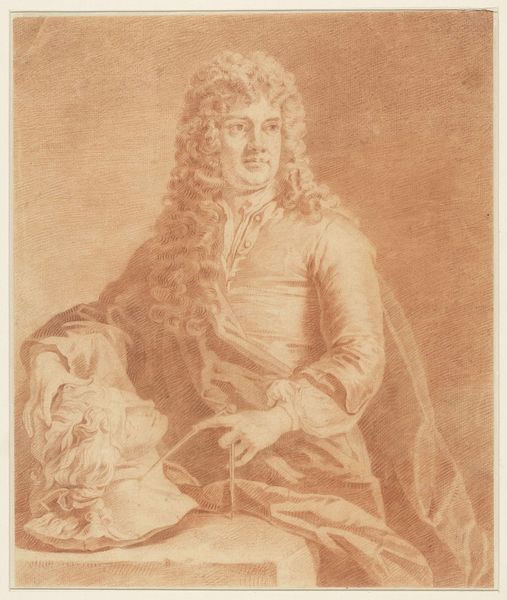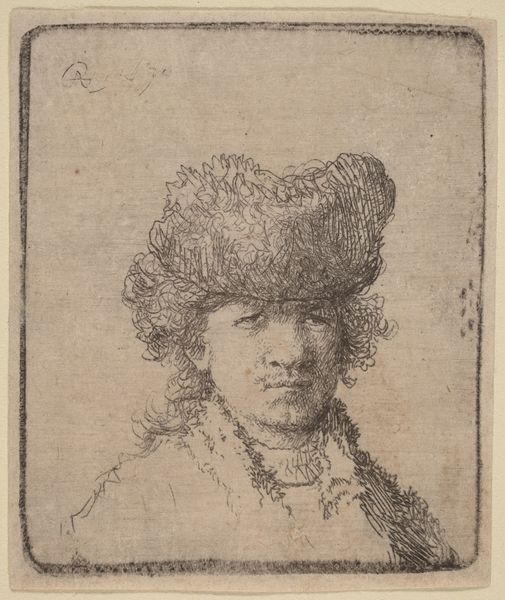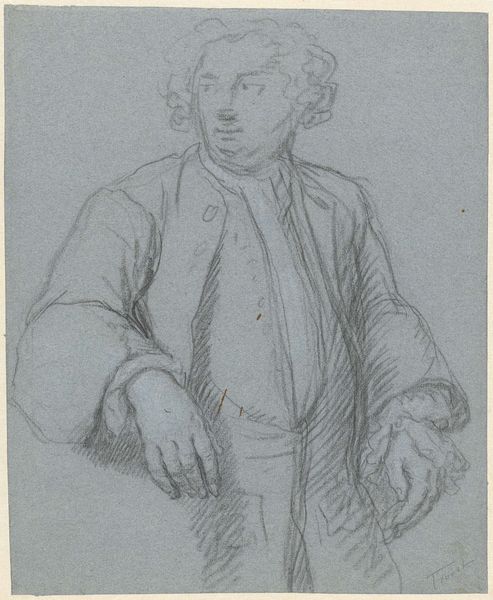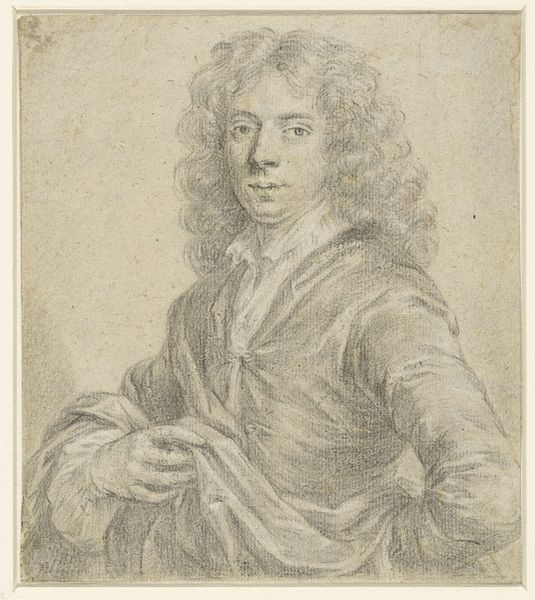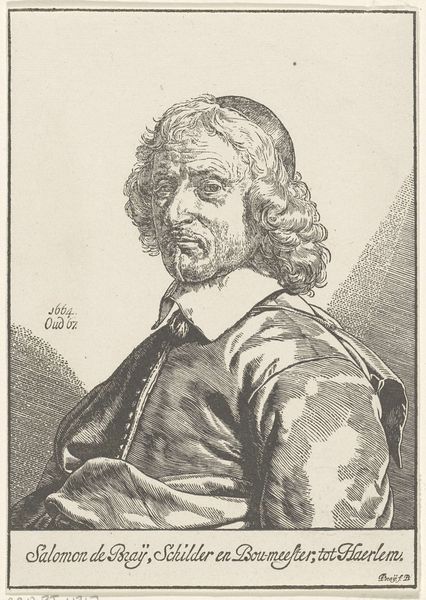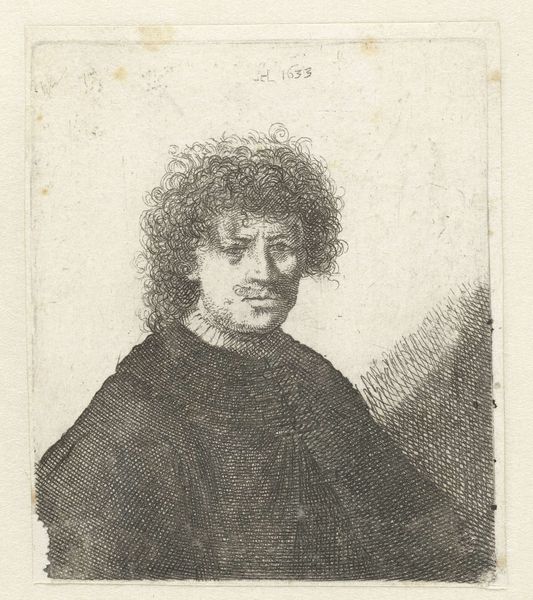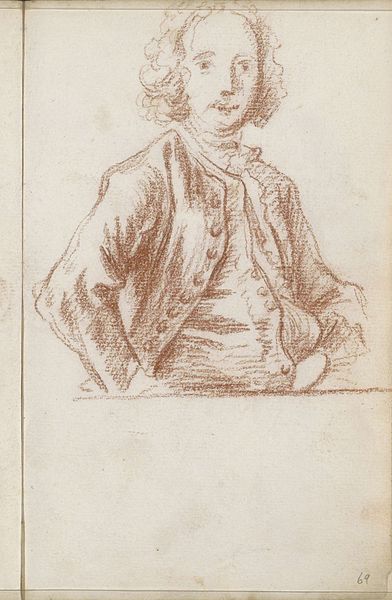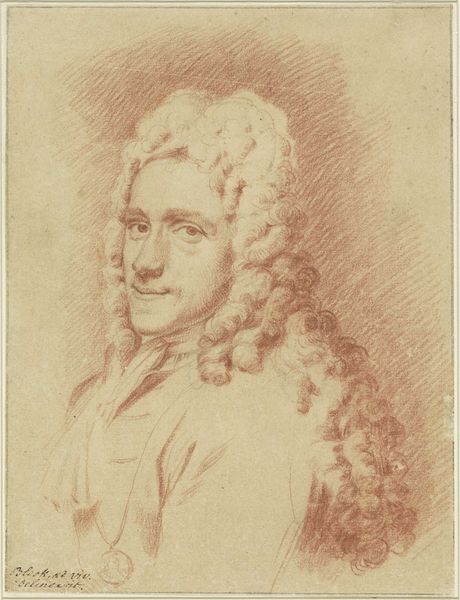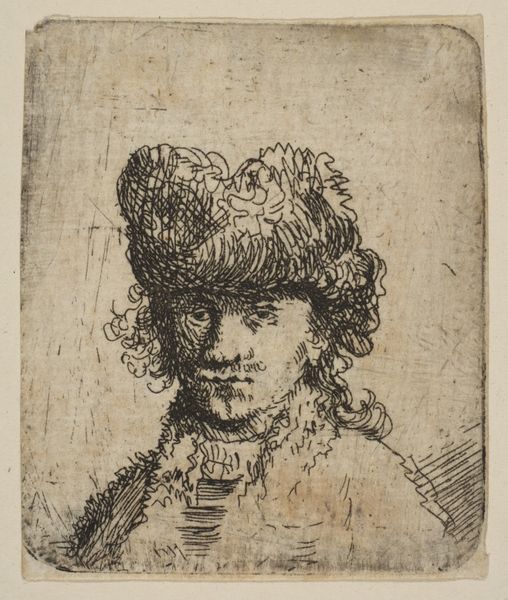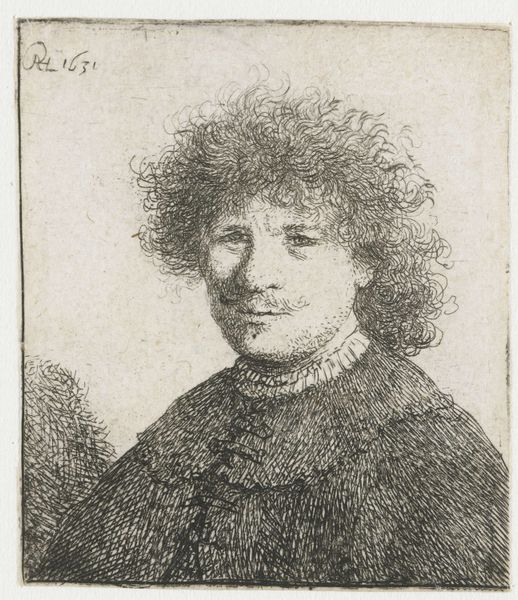
drawing, paper, ink
#
portrait
#
drawing
#
self-portrait
#
baroque
#
dutch-golden-age
#
pencil sketch
#
figuration
#
paper
#
ink
#
pencil drawing
Dimensions: height 174 mm, width 154 mm
Copyright: Rijks Museum: Open Domain
This is a self-portrait etching by Rembrandt van Rijn. What immediately grabs your attention is the intense gaze and the dynamic interplay of light and shadow. Rembrandt uses a network of fine lines to define his features, creating a sense of depth and texture on the plate. The composition, though seemingly simple, is structured around the contrast between the illuminated face and the darker areas surrounding it. This directs our focus to Rembrandt's expression, capturing a moment of introspection. Lines create a sense of volume, while the starkness of the etching medium emphasizes the rawness and immediacy of the image. The strategic use of shadow, almost obscuring parts of his figure, destabilizes conventional portraiture, inviting viewers to contemplate the transient nature of identity and representation. The rough, unfinished quality of the etching further underscores this sense of ambiguity, reflecting Rembrandt's innovative approach to the genre.
Comments
rijksmuseum about 2 years ago
⋮
This self-portrait of 1629, one of Rembrandt’s first, reveals his ambition and urge to experiment. He drew the image on the etching ground with coarse strokes of a two-pronged instrument, doubtless a quill pen. That he approached the copperplate as a drawing board was highly unusual. The result, incidentally, is not entirely successful, nor is the large format as yet convincing. But Rembrandt was a quick learner.
Join the conversation
Join millions of artists and users on Artera today and experience the ultimate creative platform.
